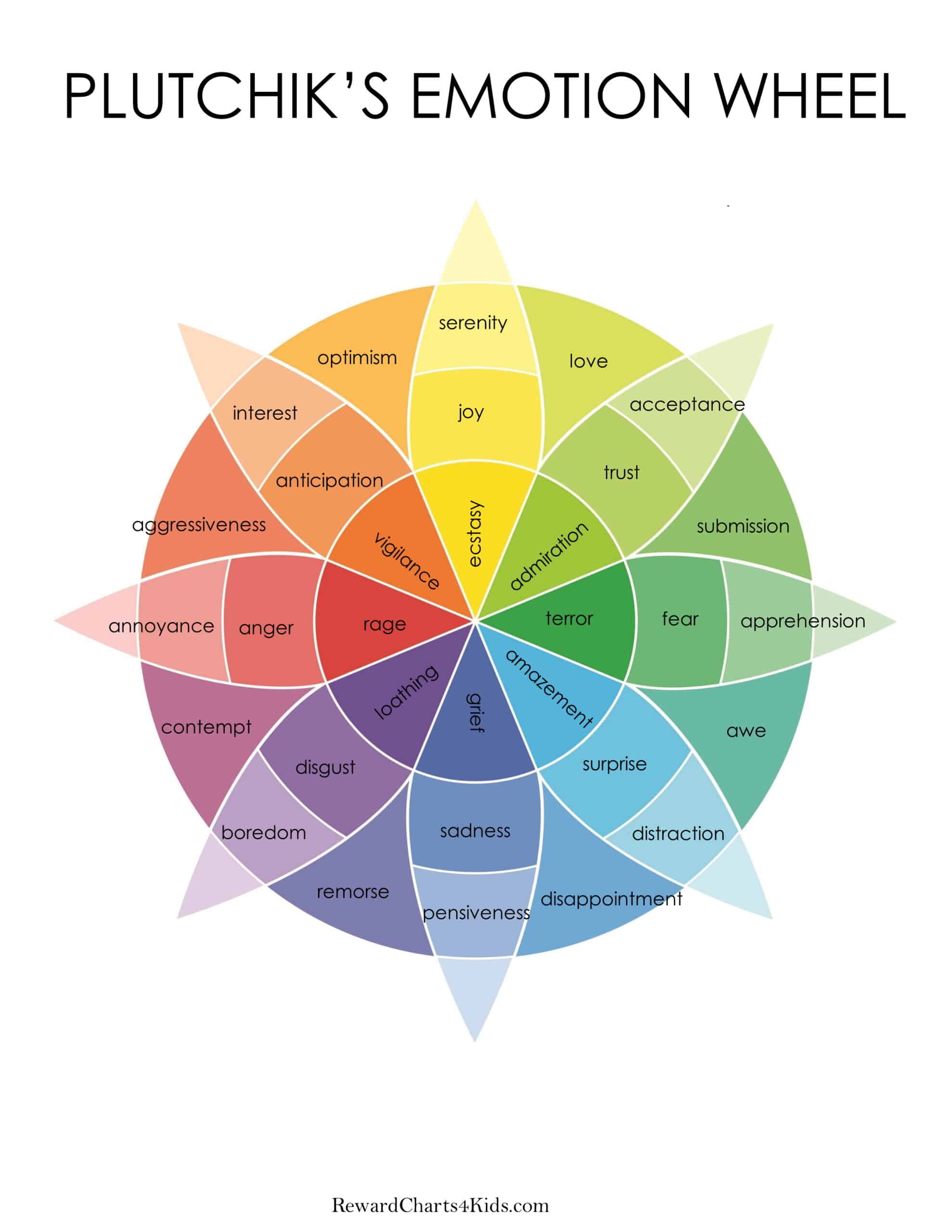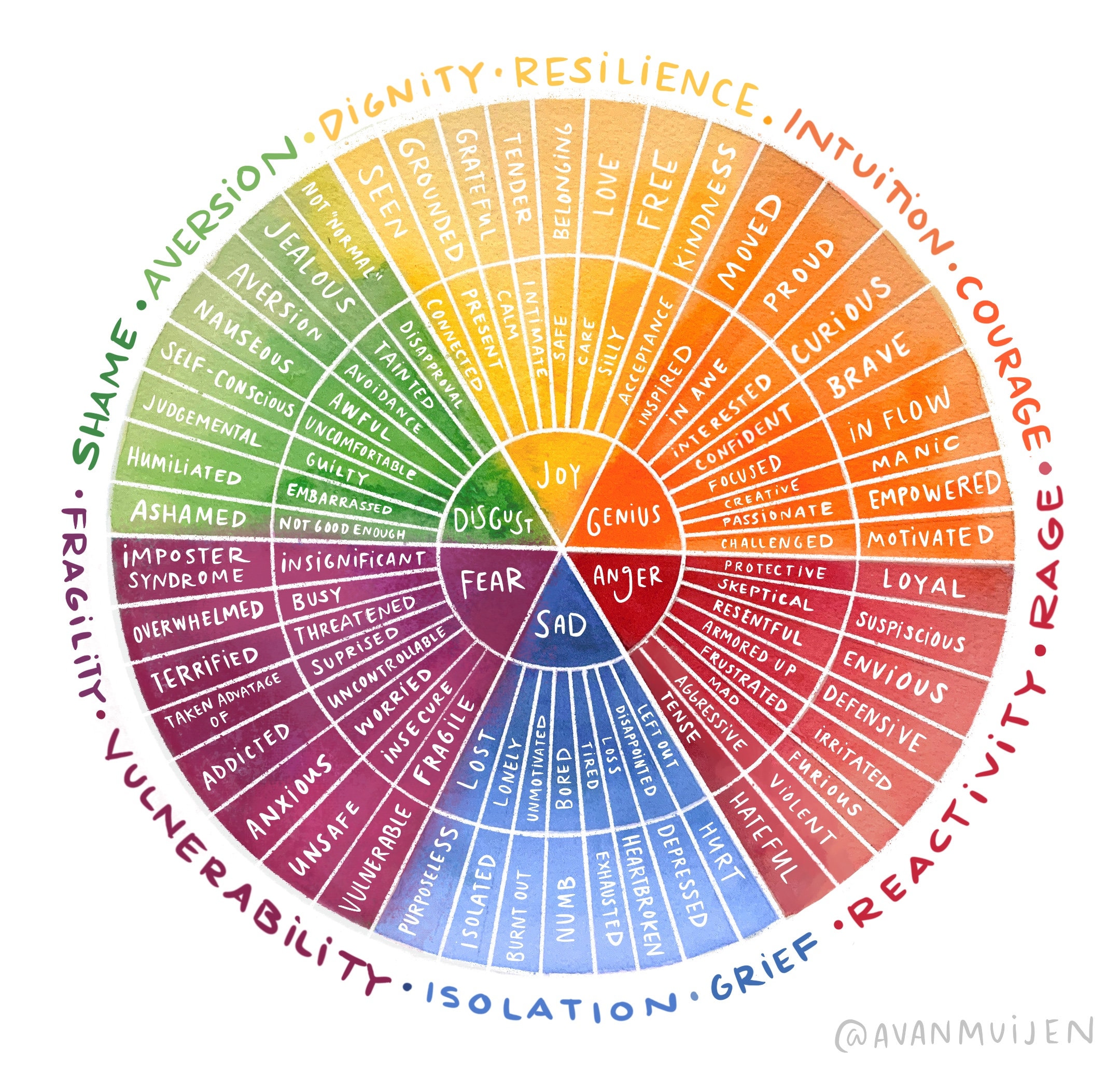The topic of personal ideas is one that is deeply subjective and unique to each individual. It encompasses the thoughts, feelings, and beliefs that shape our perspectives and influence our actions. In order to explore this topic further, we can turn to various tools and resources that can help us enhance our understanding of personal ideas.
- Emotion Wheel

The emotion wheel is a helpful tool for enhancing emotional literacy. It provides a visual representation of different emotions, allowing individuals to identify and articulate their feelings more effectively. By using the emotion wheel, one can gain a better understanding of their own emotional landscape and develop skills in emotional intelligence.
- Free Printable Emotion Wheel

For those looking for a tangible resource, a free printable emotion wheel is available. This printable can be downloaded and used as a reference tool for exploring and expressing emotions. It can be particularly useful for parents, educators, and therapists working with children, as it provides a child-friendly version of the emotion wheel.
- Feelings Wheel for Children

Children often struggle to identify and communicate their emotions. The feelings wheel for children is designed to simplify the process by providing a visual representation of different feelings. With the help of this resource, parents and educators can support children in developing emotional intelligence and coping skills.
- Printable Emotion Chart for Autism

Individuals on the autism spectrum often face challenges in understanding and expressing emotions. A printable emotion chart can be a valuable tool in assisting them. By referring to the chart, individuals with autism can learn to recognize and interpret various emotions, facilitating better communication and social interactions.
- Wheel of Emotions Artwork

The wheel of emotions can also be appreciated as a work of art. It can be transformed into aesthetic pieces such as laptop skins, iPad skins, or even framed artwork. Such creations not only serve as decorative elements but also remind individuals of the complexity and beauty of human emotions.
- Printable Feelings Wheel

To have a readily accessible feelings wheel, a printable version can be obtained. This printable format allows individuals to have a physical copy of the wheel, which can be used for personal reflection, therapy sessions, or as an educational resource. It enables a deeper exploration of one’s emotional experiences.
- Wheel of Emotions Printable PDF

An easily shareable and portable option is a printable PDF of the wheel of emotions. This digital format ensures that the wheel can be accessed at any time and from any device. It serves as a valuable tool for therapists, coaches, or individuals on a personal journey of self-discovery and emotional growth.
- Wheel of Emotions Worksheet

For those looking for a more interactive and engaging experience, a worksheet based on the wheel of emotions is available. This worksheet prompts individuals to explore their own emotions and delve deeper into their personal experiences. It can be a catalyst for introspection and self-awareness.
- Emotions Wheel: Digital Download

For personal use, a digital download of an emotions wheel is an accessible option. This resource allows individuals to have the wheel readily available on their electronic devices. Whether it’s for personal reflection, counseling sessions, or educational purposes, the digital format offers convenience and flexibility.
- Explore a Printable PDF on Emotions

Another printable PDF option is available to help individuals deepen their understanding of emotions. This resource offers a comprehensive exploration of various emotions, providing insights, and guidance on how to navigate these complex feelings. It can be a valuable tool for personal growth and self-reflection.
- Understanding the Complexity of Emotions
Emotions are often described as a rollercoaster ride, with ups and downs that can leave us feeling exhilarated, anxious, or everything in between. However, understanding the complexity of emotions goes beyond a simple joy or sadness spectrum. It involves recognizing and acknowledging the nuances and intricacies of our feelings.
- The Role of Emotional Literacy
Emotional literacy plays a crucial role in our ability to navigate the vast array of emotions we experience. It involves being aware of our own emotions, understanding their triggers, and effectively expressing and managing them. Developing emotional literacy can lead to improved self-awareness, empathy, and healthier relationships.
- Embracing a Range of Emotions
It is important to recognize that all emotions, whether positive or negative, serve a purpose and have a valuable role to play in our lives. Embracing a wide range of emotions allows us to have a more authentic and fulfilling human experience. Instead of suppressing or denying certain emotions, we can learn to embrace them and navigate their presence in a healthy way.
- Exploring the Wheel of Emotions
The wheel of emotions offers a comprehensive and visual guide to understanding the intricate web of emotions we experience. It provides a framework for categorizing and making sense of our feelings, allowing us to identify the primary and secondary emotions that influence our thoughts and actions.
- The Impact of Emotional Intelligence
Emotional intelligence, often referred to as EQ, is the ability to recognize, understand, and manage our own emotions, as well as effectively navigate social interactions. Developing emotional intelligence can have a significant impact on various aspects of our lives, including personal relationships, career success, and overall well-being.
- Nurturing Emotional Resilience
Emotional resilience refers to our ability to adapt and bounce back from challenging or traumatic experiences. It involves developing coping strategies, cultivating a positive mindset, and seeking support when needed. Nurturing emotional resilience can help us navigate life’s ups and downs with greater ease and bounce back from adversity.
- The Link Between Thoughts and Emotions
Our thoughts and emotions are closely interconnected. The way we think about a situation can greatly influence how we feel about it. By recognizing the link between our thoughts and emotions, we can develop a greater sense of control over our emotional experiences and work towards cultivating more positive and empowering thought patterns.
- The Power of Self-Reflection
Self-reflection is a powerful tool for gaining insight into our own thoughts, emotions, and behaviors. It involves setting aside time to introspect and examine our inner landscape. Through self-reflection, we can gain a deeper understanding of ourselves, identify patterns, and make informed choices that align with our values and goals.
- Cultivating Emotional Self-Awareness
Emotional self-awareness is the ability to recognize and understand our own emotions in the moment. It involves tuning in to our internal state, identifying the specific emotions we are experiencing, and acknowledging the factors that contribute to those emotions. Cultivating emotional self-awareness can help us regulate our emotions more effectively and make conscious choices.
- Honoring Personal Feelings and Boundaries
Each individual has their own unique set of feelings and boundaries. It is essential to recognize and honor these personal aspects of ourselves and communicate them to others. By establishing and maintaining healthy boundaries, we can protect our emotional well-being and cultivate relationships that are built on mutual respect and understanding.
- The Role of Empathy in Personal Ideas
Empathy involves the ability to understand and share the feelings of others. It plays a vital role in personal ideas as it enables us to connect deeply with others, appreciate different perspectives, and foster meaningful relationships. By practicing empathy, we can create a supportive and inclusive environment where personal ideas are valued and respected.
- The Importance of Authenticity
Authenticity refers to being true to oneself and aligning one’s thoughts, feelings, and actions with one’s core values. Embracing authenticity allows individuals to express their personal ideas genuinely and confidently. It creates a sense of congruence and can lead to greater fulfillment and satisfaction in life.
- The Connection Between Personal Ideas and Identity
Personal ideas are closely tied to our sense of identity. Our thoughts, beliefs, and values shape our perception of ourselves and the world around us. Exploring and articulating personal ideas can contribute to a deeper understanding of our own identities and help us cultivate a strong sense of self.
- Embracing Personal Growth and Transformation
Personal ideas are not static; they evolve over time as we gain new experiences and insights. Embracing personal growth and transformation involves being open to change, continually questioning and refining our beliefs, and allowing ourselves to evolve. It is through this ongoing process that we can cultivate personal ideas that are authentic and meaningful.
- Living a Life Aligned with Personal Ideas
Living a life aligned with personal ideas involves actively incorporating our beliefs, values, and passions into our daily experiences. It requires making choices and decisions that are in alignment with our personal truths, even when faced with challenges or societal expectations. By living authentically, we can create a life that is deeply fulfilling and true to ourselves.